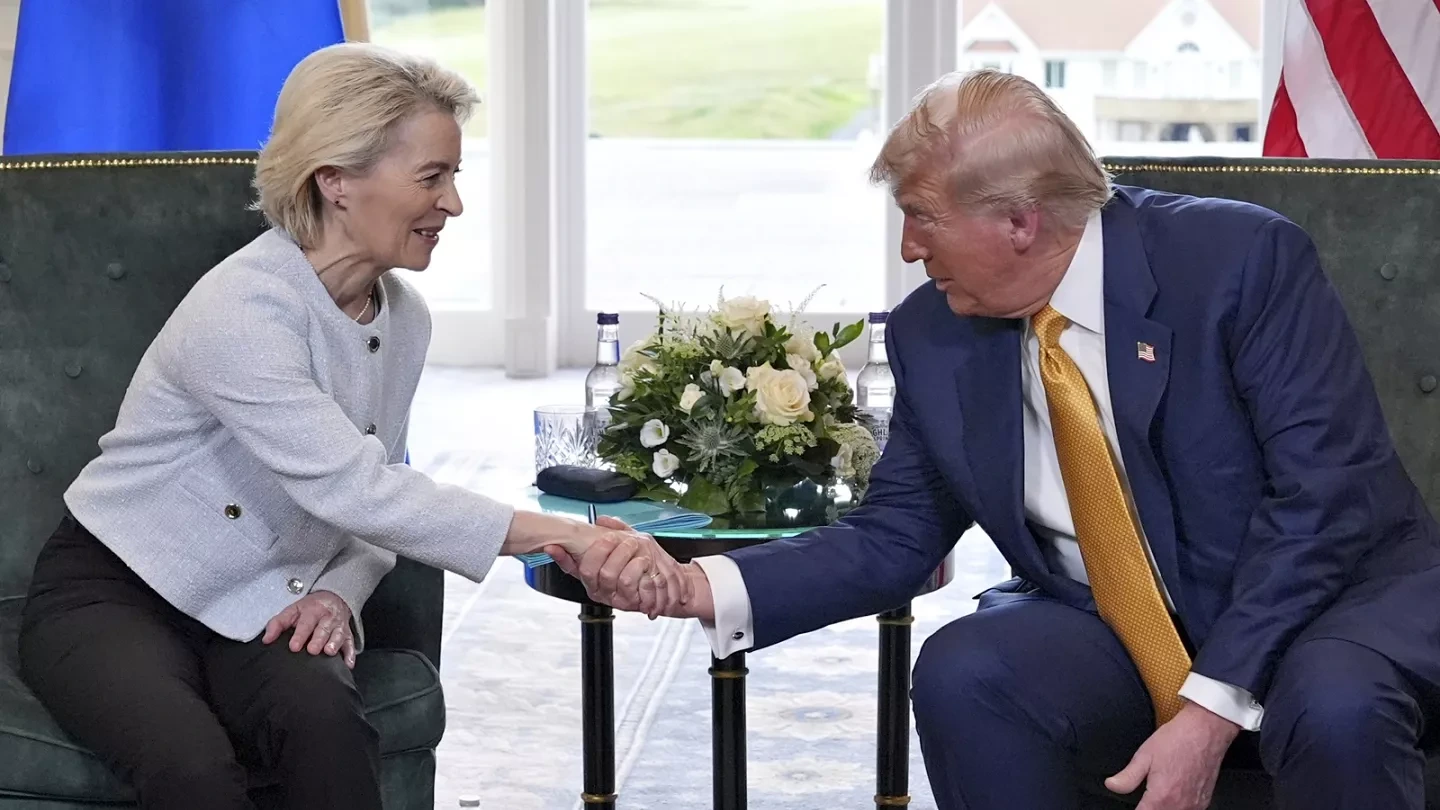Islamabad 28 July: President Donald Trump has announced a trade agreement with the European Union that will impose a 15% tariff on most EU imports, lowering the threat of higher tariffs that had been looming over transatlantic trade for months.
The rate is a compromise from earlier threats of 30% in July and 20% in April. In 2024, the United States shipped $370.2 billion worth of goods to the European Union.
While the European Union exported approximately €531.6 billion in goods to the U.S., which translates to around $606 billion — some sources report $571.1 billion per COMTRADE data.
As part of the deal, the EU will not impose retaliatory tariffs on American goods. Trump described the outcome as mutually satisfactory. European Commission President Ursula von der Leyen, standing alongside Trump, said the agreement would bring stability and predictability for businesses on both sides of the Atlantic.
Despite the breakthrough, Trump confirmed that 50% tariffs on steel will remain unchanged. He also signaled that more tariffs could be introduced, particularly on pharmaceutical products, with Ireland likely to be impacted. A potential 200% tariff on imported drugs is still under consideration.
Commerce Secretary Howard Lutnick added that tariffs on semiconductor imports may also be introduced soon. In outlining the agreement, Trump said the EU has pledged to buy $750 billion worth of U.S. energy and to invest $600 billion in American industries, including military equipment. However, the timeline and details of these investments remain unclear.
Von der Leyen said EU countries will also begin purchasing large quantities of U.S. liquified natural gas, oil, and nuclear fuel, replacing Russian energy imports. She estimated that $250 billion would be spent annually on these products over the next three years.
The agreement includes exemptions for certain sectors, such as aircraft parts, semiconductors, select chemicals, some agricultural products, and generic pharmaceuticals, which will remain tariff-free. Von der Leyen acknowledged that while the 15% tariff is still high, it prevents greater disruption and maintains access to the U.S. market.
She described the negotiations as difficult but productive, while noting that the average U.S. tariff on EU imports in 2024 was just 1.2%. Leaders from Ireland and Germany welcomed the agreement but cautioned that higher duties could strain cross-Atlantic trade and particularly affect industries like automotive and pharmaceuticals.
The deal closely resembles the one reached with Japan earlier in the week, where a similar 15% tariff was applied. EU officials had been in intense talks with U.S. representatives for weeks and had even prepared a list of $100 billion in retaliatory tariffs in case a deal failed.
Products that were under threat of countermeasures included Boeing aircraft, bourbon, soybeans, and various consumer goods. Agricultural and trade groups had warned that the originally proposed 30% tariffs could drastically raise prices for items like wine, cheese, and pasta.
READ MORE: Trump Imposes 30% Tariff on EU, Mexico Imports
Despite the new agreement, European cars and machinery may still face rising costs, and trade associations warn that billions in extra expenses have already been absorbed by businesses. The EU, which accounted for $605 billion in U.S. imports last year, remains the country’s largest trading partner, with key imports including pharmaceuticals, vehicles, aircraft, and heavy equipment.
While the agreement lowers immediate risks, uncertainty remains around future tariffs—especially those that could target the pharmaceutical sector in the coming year and a half.









